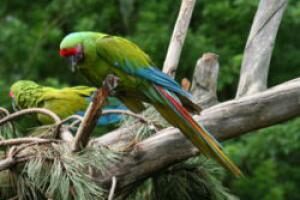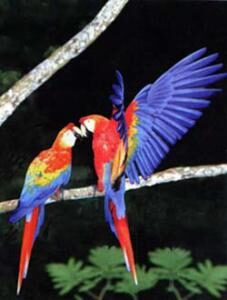
Photo: Ara Macao
The first part of the book «Chronicle Peru», (1553).
In 1553, Red Ara was first mentioned in the literature— in the book «Chronicle Peru» Pedro Sesye de Leon:
Leaving the city of Anthocha in Kartate, when we settled it, Captain Horge Robledo and others discovered so much fish that we killed with sticks that we would like to catch… There are many turkeys, pheasants, parrots of different species, red ara [guacamayas], very bright coloring.
— Syes de Leon, Pedro. Chronicle Peru. Part 1. Chapter IX.[2]
Body length 78—90 cm, wing — 28—40 cm, tail — fifty—62 cm. Head, top of the wings, neck, top of the back, breast and stomach are bright red, the wings and bottom of the wings are bright blue, a yellow strip passes across the wings. Naked cheeks light with rows of white feather. Black overseas with a brown-black spot at the base of the beak and the black tip, the connection of brownish-black. The iris yellow. The female has smaller beams and wider at the base, and its upper half has a more steep bend.
Lives from Mexico to Ecuador, Bolivia and the Amazon River.
Tropical forests inhabit. Prefer to stay in the crowns of tall trees. They feed mainly on plant foods: fruits, nuts, young shoots of trees and shrubs. During the ripening of agricultural crops, they fly to feed on the fields and plantations, which brings tangible damage to the crop.
Very attached to the hollow, where they nest, use it in reproduction seasons for many years in a row. The marriage period usually begins in April—May. The relationship of birds at this time is quite interesting. Sitting next to the branch, turning their tails in opposite directions, the parrots gently forth each other feathers on the head, neck, tail, under the tail, and they accompany all the actions with quiet gurgling sounds. Then the male begins to dance, shake his head, throw her back and nod.
A pair of red ar in the nesting period
In laying 2—3 eggs up to 50 mm long, 35 mm wide. Running lasts 24—26 days. The chicks hatch blind and naked, in the early days they are mainly fed by the female. She warms the offspring. They begin to open up in the second month of life, and after 10 weeks the height of the pen ends completely. At the age of 100 days, the chicks leave the nest.
The Indians have long been hunting for them. They used meat for food, and feathers — for arrow and jewelry. The meat of these parrots of good taste, equates to beef. The nest of these birds was considered wealth and was inherited from father to son, because the long and bright feathers of Ara were very appreciated in ritual outfits.
The first copies of these parrots fell into Europe in the middle of the 16th century. Amenable to training, they can learn to say up to 100 or more words. However, it belongs to rare types of parrots contained at home. It is difficult to maintain such a large bird at home, because of their size and a loud sharp cry, they are unbearable in the rooms. Live 60—80 years.
Other types of genus «Ara»:
- Green -winged ara
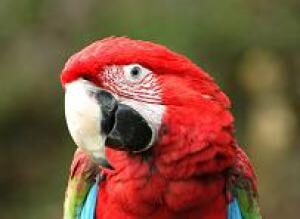
- The chestnut -haired ara
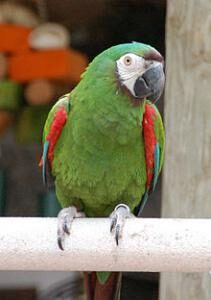
- Red -haired Ara
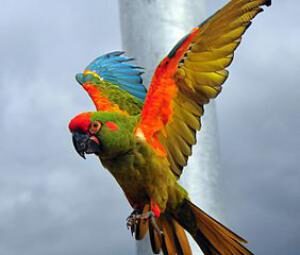
- Blue -ruble Ara
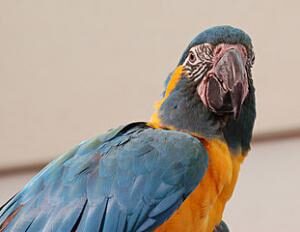
- Blue-yellow ara
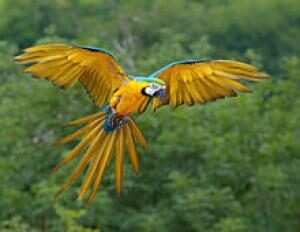
- Small soldier Ara
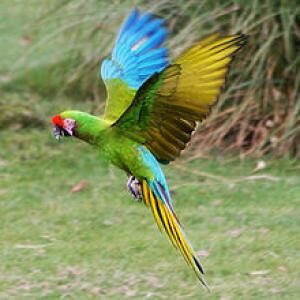
- Blue Ara
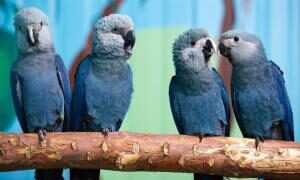
- Soldier Ara
